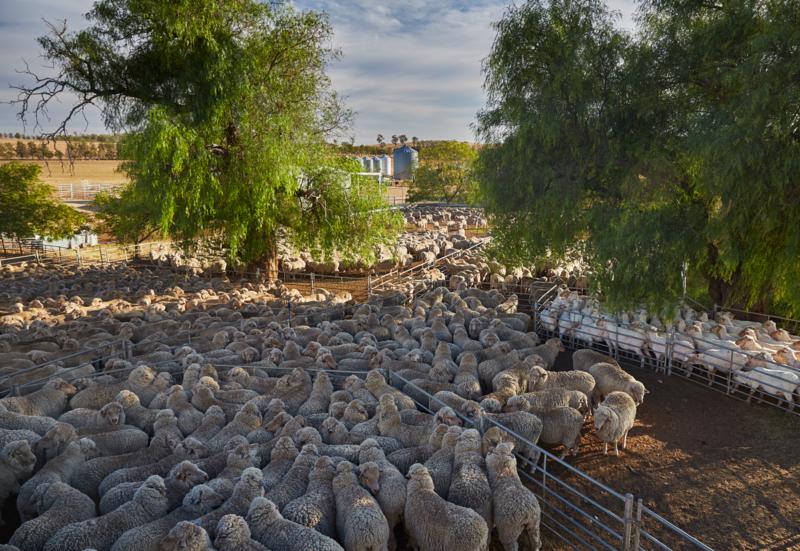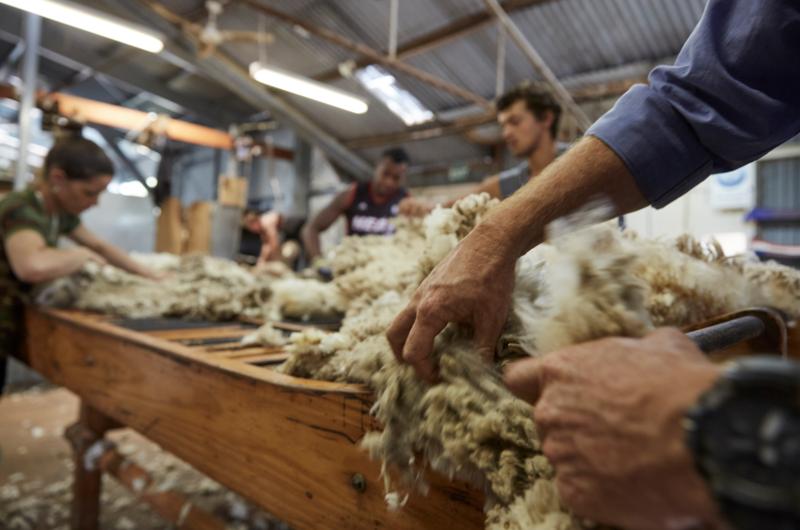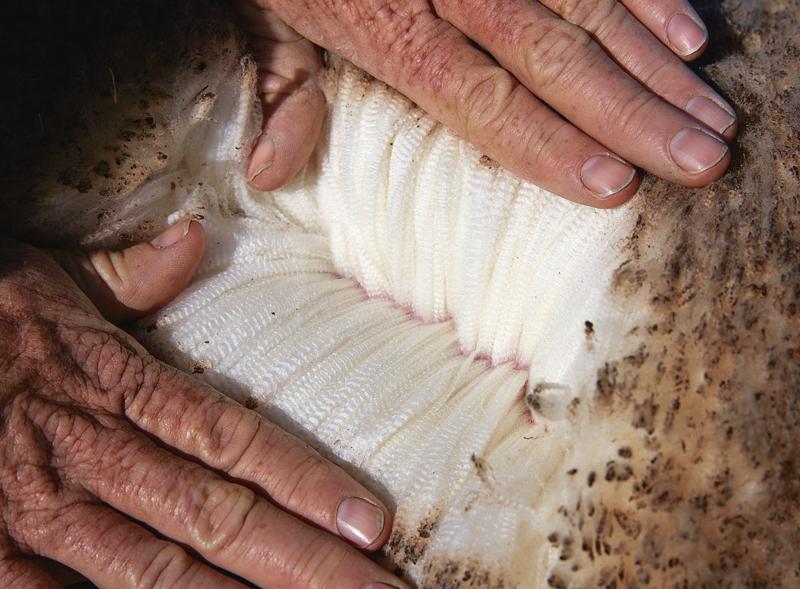WE go to the polls every three years to vote in a federal government. But some are now asking whether sheep farmers really need to vote every three years to decide on the levy for wool marketing. Or, as the number of farmers voting in WoolPoll has plunged to an all-time low, would every five years be sufficient?
Australian Wool Innovation (AWI), the industry’s marketing and research body, carries out WoolPoll to determine how much woolgrower money is spent on marketing, research and development. A non-profit company owned by Australian wool levy payers, AWI also receives matching research and development contributions from the federal government and licenses the Woolmark trademark. NSW Farmers’ Wool Committee deputy chair Ed Storey believes changes are now needed to the WoolPoll process, with his views also reflected in the recommendations of an independent review of AWI’s performance, which was released in July.
“I’d be happy if WoolPoll went to five years, as it’s better for research and development programs,” Ed says. “But there needs to be changes in how it’s run.” Ed, a sheep producer from Yass in South East NSW, is encouraging growers to think about how much of their wool income they want to invest in research, development and marketing.
“We pay a lot of levies in agriculture, but the wool industry is one where we can have an influence,” Ed Storey says.
The matter is of particular significance now, as wool prices are at a historic high. “I’m always concerned when companies are in receipt of a monopoly levy, as throughout history, often it is wasted,” Ed says. “A 2% levy would substantially increase the revenue for AWI, due to the current excellent wool prices.”
WOOLPOLL LEVY - THE NUMBERS GAME
At the last vote in 2015, when it was decided to continue a 2% levy, only 50.68% of growers voted – the lowest in five WoolPolls and down from 60.94% in 2012. Of the 2% levy, AWI spends 60% on marketing and 40% on research and development. It says the benefits generated from its total investment over 2013-14 to 2015-16 are a return of $2.70 on every dollar invested.

Under its legislation and Statutory Funding Agreement, AWI must carry out an independent poll of levy payers every three years to determine the rate of the levy, and regulations stipulate three to five options must be given to vote on, including a zero rate.
Woolgrowers who have paid $100 or more in levies during the past three financial years are able to vote, making 42,000 growers eligible this year. The 2018 levy options to vote on, as announced by AWI, are 3%, 2.5%, 2%, 1.5% and 0%. AWI is recommending 2% as its levy preference.
AWI chief executive Stuart McCullough confirmed in August that the 1.5% levy option would be offered this year – there was wide-ranging disapproval that it wasn’t included in 2015. And with criticism coming from growers in the past about the lack of transparency and consultation during the process, for the first time an independent selection committee has helped select the WoolPoll panel members for this year. NSW Farmers’ Ed Storey is one of the 11 members on the 2018 WoolPoll panel, which is chaired by South Australian woolgrower Sydney Lawrie. Sydney is encouraging all eligible woolgrowers to vote.
“We are the only industry that gets this opportunity in Australia, so it’s a great democratic process. It’s our wool, we need to have our say,” Sydney Lawrie says.
SOURCE: Woolpoll 2018
Jock Laurie, the AWI board representative on the panel, says the low number of voters in the last poll was in many ways indicative of the agriculture industry. “We’re [farmers] very active on a daily basis managing our own businesses and I understand being able to focus on this is secondary to feeding stock with the drought,” Jock says. “But I want to encourage people to take the time to consider the importance of their levy.”
He says there have been a lot of discussions with woolgrowers and they were clear about what they wanted to pay. “Some people wanted to pay more because they can see the value.”
RELATED: ‘Bucking tradition breeds innovation for Merino sheep farmer’

MAINTAINING THE VALUE OF AUSTRALIAN WOOL
While Jock agrees there will be more money coming into AWI with higher wool prices, he says the company is conscious of the drop of production in wool due to drought and the number of lambs, which will impact on next year. “Anybody in the wool industry understands the volatility of the market, and while we are seeing fantastic wool prices at the moment, history shows it is difficult to maintain,” he says.
RELATED: Industry outlook: ‘drought is part of farming’
“We must continue to promote wool internationally and make smart investments to continue demand for wool itself. The fact is we must set sensible boundaries with which to operate.”
Jo Hall, chief executive of WoolProducers Australia (WPA), the peak national body for the wool-producing industry, says it’s exceedingly important that growers take the time to vote.
“AWI, as the levy-funded organisation, is owned by the growers, so they need to take the time to set the levy,” she says.
WPA has been critical of the WoolPoll process in the past and Jo says at current wool prices a 2% levy would generate significant income for AWI, while a 1.5% levy would be an “incremental decrease”. “But as AWI has been pointing out, there is less wool coming through the supply chain due to dry conditions, so all factors do need to be considered,” Jo says.
She points out AWI has amassed “considerable” funding reserves. At its annual general meeting last year, it reported reserves of $106 million. “With high prices and increased levies, there is a risk money isn’t spent in a considered way. It’s incumbent on the board to enlighten shareholders on how income will be invested,” she says.
WPA provided its preferences for levy options to the WoolPoll panel as 0%, 1%, 1.5%, 2% and 2.5%. When the levies were announced, WPA said in a statement that it was disappointed that a 3% option had been included, and 1% had been missed out. “Given that the total combined percentage of votes in both the 2012 and 2015 WoolPolls for 2.5% and 3% levy rate options did not exceed 7%, there is zero justification for two levy rate options above 2%,” the statement said.
“It is illogical in the current environment [high wool prices] to only provide woolgrowers with the opportunity to reduce the levy rate by half a percent or cease it altogether, but to then provide two options above status quo.”

How much do growers pay AWI?
Average price: 1,324c/kg (18 micron average)
Average bale price: $2,366
Wool levy (2%) per bale: $47.32
AWI reserves: $106 Million
Source: AWI 2017 annual general meeting, August 2017.
WOOLPOLL - IS IT TIME FOR A CHANGE?
Changing the frequency of the WoolPoll from three to five years is also under discussion. It is one of 82 recommendations made by the independent AWI review initiated by the Department of Agriculture following allegations of a toxic culture within AWI. This was sparked by last year’s “man in the mirror” scandal, when AWI chair Wal Merriman secretly watched and listened to growers in what was meant to be an anonymous focus group. The AWI board investigated the incident and found the chair had not breached its code of conduct.
The review says moving WoolPoll to every five years would give longer-term funding certainty, encourage long-term investment in research, and reduce the costs of running WoolPoll. A woolgrower survey conducted as part of the review found 66% of the 415 respondents agree with the statement “WoolPoll is a fair approach to determining the levy rate”. However, Jo Hall says WPA is calling for a “thorough review” of WoolPoll. “Three years is a short cycle for research and development,” she says. “Something WPA has long been concerned with is the accountability and operations of AWI. If WoolPoll was to go to five years, WPA would like to see more genuine consultation.”
WOOLPOLL 2018 - NEED TO KNOWS
Voting takes place over six weeks between 17 September and 2 November.
The outcome will be announced at AWI’s AGM on 23 November. The rate will take effect from 1 July 2019.